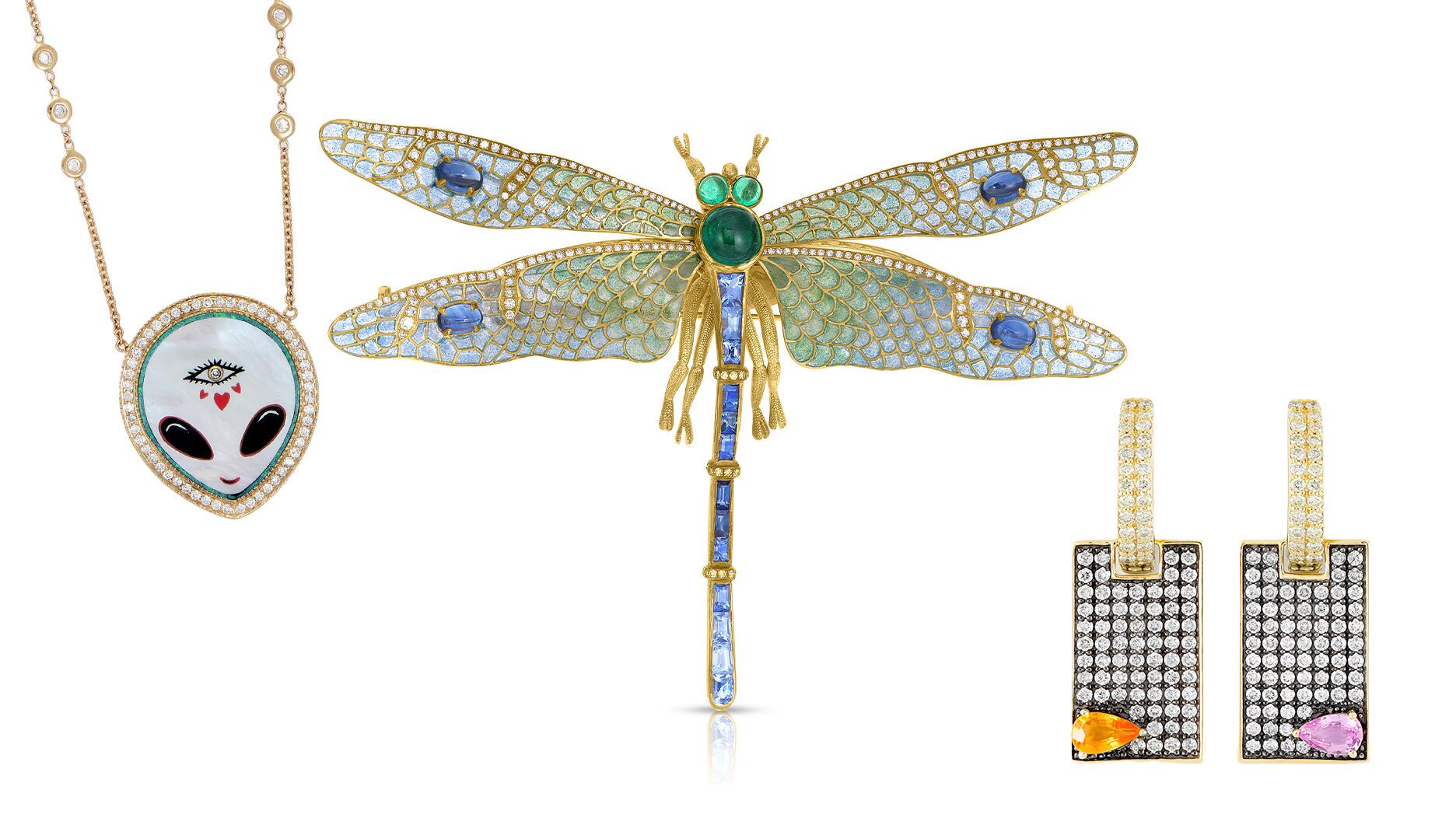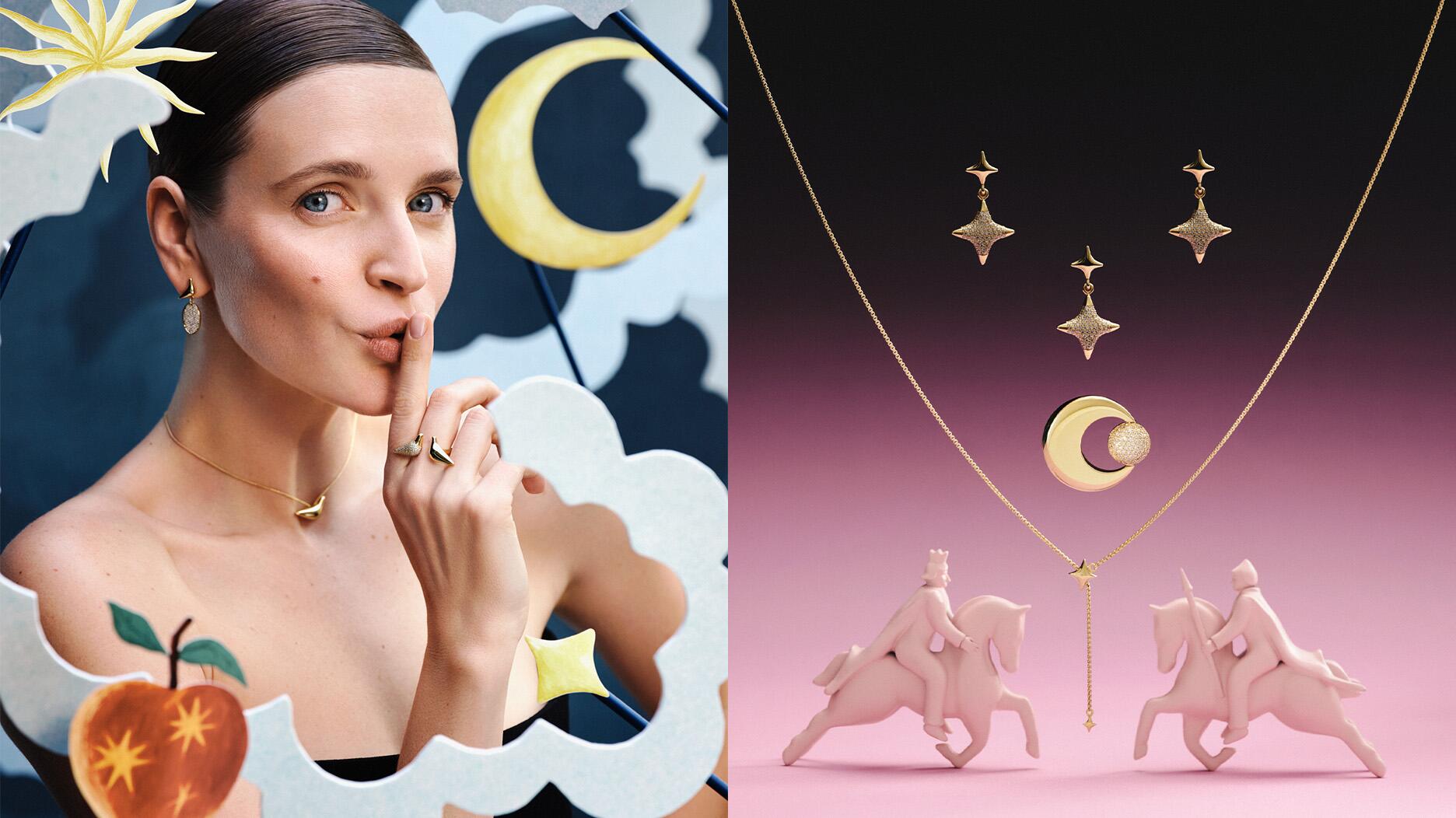The luxury goods company said founder Ippolita Rostagno will remain at the brand’s helm.
The History Behind … Micromosaic Jewelry
National Jeweler takes a deep dive into the style of antique jewelry in which thousands of tiny fragments of glass create a painting-like picture.

New York—One look at a high-quality piece of micromosaic jewelry and the labor and work that goes into it is immediately evident.
The antique style, reaching its pinnacle largely in 19th-century Italy, is a great example of jewelry as art, taking inspiration from traditional mosaics but in a scaled-down size.
“In my opinion, cameos and micromosaics are two of the greatest bargains in the jewelry business,” said Joe Murawski, founder of antique and estate jeweler Joden World Resources, because of the work that goes into them compared with their prices.
National Jeweler spoke with Murawski and Francesca Neri Serneri, one of the designers behind Italian brand Le Sibille, and consulted a number of online resources to learn more about the history behind micromosaic jewelry.
What is a Micromosaic?
Micromosaics are created from tiny fragments of tesserae, generally made from glass or enamel, set to form small pictures. Murawski described the size of the tesserae as being as little as the lead in a mechanical pencil (about 1 mm).
As all the sources and online resources noted, making a micromosaic is a painstaking process.
One common method includes melting glass, pulling it into thin rods or threads and then, after it cools, cutting it into tiny pieces that are then arranged on a copper or gold tray to create a scene, portrait or landscape. Many depict ancient Italian landmarks or scenes from nature such as animals or plants.
According to a post online from Lang Antiques, black Belgian marble also was carved and used as the background or base for micromosaics in the mid-19th century.
Whether metal or marble, mastic or cement was used to adhere the tesserae to the base as it was arranged into an image or scene.
Once that hardened, any gaps between the tesserae were often filled with colored wax. Then the image often was polished to give it a smooth and even surface, according to Lang Antiques.
According to the Gemological Institute of America, one square inch of micromosaic jewelry can have as many as 1,400 pieces of tesserae.
Murawski said some can have as many as 3,000 to 4,000, but most are comprised of hundreds of pieces of tesserae.
When and Where Did Micromosaic Jewelry Become Popular?
Italy is given much of the credit as the origin nation for micromosaics, and many agree that the style was refined and reached its peak in the 1800s,
According to Lang Antiques, micromosaics have links to the Vatican.
The Vatican Mosaic Studio opened in 1727 to convert some of the paintings in the city’s basilica to mosaics for preservation. There, artisans began to experiment with making tesserae into small, portable works of art.
Murawski also talked about the style’s link to the Vatican, noting that if someone made a substantial donation to the Catholic Church, the papal jeweler would make an image of them as cameo or micromosaic, or to create a nature-themed micromosaic for them.
Demand for this new style of mosaic also was then further helped along by the “Grand Tour,” an era in the 19th century in which aristocrats would take an extended trip around Europe, particularly France and Italy, to see the cultural and historical sites. They often wanted souvenirs their trips, making micromosaic jewels of sites and scenes the perfect keepsake.
Due to the high demand for the style in the 19th century, Lang said, an influx of workers migrated to Rome to make micromosaics but they weren’t skilled in the art and began making poor quality micromosaics that flooded the market and hurt the industry overall.
How Much Do They Cost?
According to Murawski, the price of a micromosaic jewelry can range pretty widely depending on their quality and the number of tesserae used.
He said they could be as low as $5 for those, say, made in brass with larger pieces of tesserae, while a “really fine example” from Italy using 5,000 pieces “can cost $25,000 quite easily.”
Murawski noted that some micromosaics have an inlay of black onyx around the base—likely just to give the colors in the scene more contrast—but added those are easier to make than the micromosaics in which the glass is affixed directly to the metal and also aren’t quite as rare, making them a little more affordable.
What Is the Market for Micromosaics Today?
“The people that like (micromosaics), love it,” Murawski said. “The people that don’t care about it, don’t care at all about it.”
He added that many people who come into the Joden store in Grove City, Pennsylvania, enjoy looking at it the pieces even if they don’t buy any.
Joden World Resources carries the real antique deal. But some contemporary fine jewelry brands and designers make micromosaic pieces too.
Gurhan is one such brand, adding mosaics to its existing collections.
Two modern Italian brands are also making the micromosaic their business.
Rome-based jewelry brand Le Sibille and its three founders want to bring back the style of Renaissance workshops, and one way they’re doing that is through their contemporary micromosaic line.
They take inspiration from the very art they studied, except Le Sibille doesn’t grind the piece down to make them flat, as many of the antique pieces were, the brand’s Neri Serneri said.
Meanwhile, Ravenna, Italy-based Sicis Jewels developed a department for micromosaic jewels after a decade of historical and bibliographic research about the art form.
They have taken the ancient techniques and applied them to goldsmithing and contemporary jewels, including a line of high jewelry that uses tesserae.
{embed 407}
The Latest

Laura Burdese, who joined the Italian luxury brand in 2022, will take on the role in July.

The National Jeweler editors revisit the most noteworthy industry happenings and design trends from 2025.

How Jewelers of America’s 20 Under 40 are leading to ensure a brighter future for the jewelry industry.

Need a gift for the cat lover who has everything? Look no further than our latest Piece of the Week.


It purchased the “Grosse Pièce,” an ultra-complicated Audemars Piguet pocket watch from the ‘20s, for a record-breaking price at Sotheby’s.

The lab-grown diamond grower now offers custom engagement and fashion jewelry through its Kira Custom Lab Jewelry service.

Roseco’s 704-page catalog showcases new lab-grown diamonds, findings, tools & more—available in print or interactive digital editions.

Chandler got his start at Michelson Jewelers and has served as DCA president and CEO since 2001. He will retire at the end of the month.

The boutique is slated to open this week inside Terminal 8, offering pre-owned Rolex watches and more to international travelers.

Sponsored by Digital Monitoring Products

The special-edition egg pendant ingested in a New Zealand jewelry store was recovered after a six-day wait.

Associate Editor Natalie Francisco plays favorites with Piece of the Week, selecting a standout piece of jewelry from each month of 2025.

The “Love and Desire” campaign is inspired by the magic that follows when one’s heart leads the way, said the brand.

Two awardees will receive free tuition for an educational course at the Swiss lab, with flights and lodging included.

Berta de Pablos-Barbier will replace Alexander Lacik at the start of January, two months earlier than expected.

Sotheby’s held its first two jewelry sales at the Breuer building last week, and they totaled nearly $44 million.

Winners will receive free registration and lodging for its fourth annual event in Detroit.

Here are six ideas for making more engaging content for Instagram Reels and TikTok, courtesy of Duvall O’Steen and Jen Cullen Williams.

The honorees include a notable jewelry brand, an industry veteran, and an independent retailer.

Carlos Jose Hernandez and Joshua Zuazo were sentenced to life without the possibility of parole in the 2024 murder of Hussein “Sam” Murray.

Yood will serve alongside Eduard Stefanescu, the sustainability manager for C.Hafner, a precious metals refiner in Germany.

The New Orleans jeweler is also hosting pop-up jewelry boutiques in New York City and Dallas.

Set in a Tiffany & Co. necklace, it sold for $4.2 million, the highest price and price per carat paid for a Paraíba tourmaline at auction.

The jeweler’s “Deep Freeze” display showcases its iconic jewelry designs frozen in a vintage icebox.

Take luxury gifting to new heights this holiday season with the jeweler’s showstopping 12-carat sphene ring.

This year's theme is “Unveiling the Depths of the Ocean.”





























